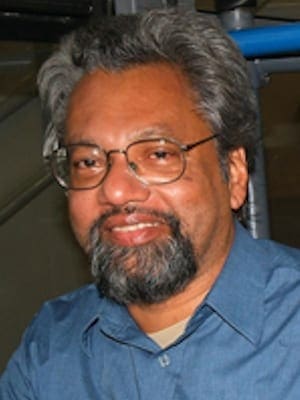On my first visit to Nepal in 1989, I was appalled at the grinding poverty in which the vast majority of its citizens lived.
At the same time, hundreds of thousands of tourists from all over the rich world came to trek, climb the Himalayas or seek some variation of private nirvana.
None of this tourist wealth “trickled down” to the poverty-stricken masses huddled on the riverbanks in Kathmandu or in the remote villages, which had neither roads nor healthcare facilities.
The Hindu caste-system was strongly entrenched, and conversion to Christianity forbidden.
Yet an “underground” church flourished, comprising mostly very poor folk; foreign Christian doctors, nurses and agrarian researchers helped build a functioning infrastructure, while corrupt politicians and business elites pocketed the wealth flowing from tourism.
Most of the “tourist paradises” of the majority world – from the Caribbean islands (playgrounds of the rich and famous) to Bali – tell the same story.
The poor are invisible not only to the hotel and tourist industry but to the global media, until disasters in the form of hurricanes, earthquakes and tsunamis strike.
But the recent tragedy in Nepal illustrates the close nexus between corruption, oppressive religious and cultural systems, and the betrayal of citizens by their own governments.
When the Indian Ocean nations were devastated by the tsunami of Dec. 26, 2004, I raised the question: Why is it that when hurricanes and earthquakes hit places like Florida or Japan, the loss of life is minimal, but when the same disasters occur in Central America or South Asia, the devastation is mind-boggling?
The answer is simple and straightforward: poverty. Or poverty combined with corruption and incompetence on the part of government officials.
In South Asia, annual warnings about floods and cyclones are routinely ignored when the technology needed to save lives and property is readily available.
Coral reefs and mangrove swamps (that absorb much of the impact of tropical storms and ocean surges) have virtually disappeared from our coastal belts.
Building contractors frequently violate safety standards, even when building in earthquake-prone areas.
Earthquakes, volcanic eruptions, even animal predation and other natural events are not aspects of “the Fall,” as has been understood in much of the Christian tradition, but rather the way God has chosen to bring about ecological changes and biodiversity on the planet.
The awesome Himalayan ranges themselves were produced by earthquakes. The “fallenness” of the human condition is expressed in our increased vulnerability to such events.
It is sinful human actions (including wrong priorities) that result in the heavy loss of life, much of which is preventable.
Poverty and economic inequalities on the scale seen in our world cannot be blamed on God. They represent a violation of God’s will for humanity.
God has chosen to create humans as part of a material world. So, as material beings, we share in the unpredictability and vulnerability of the rest of the created order.
Our solidarity as a human species is what leads to our rejoicing in the joy of others and weeping over the pain of others.
To only receive through the good that others do, but not to suffer the consequences of what others do, would be a denial of our inter-dependent “creatureliness.”
Natural events such as earthquakes, volcanic eruptions and tsunamis are a painful reminder of our fragility, our interconnectedness with and dependence upon nature.
When tragedies strike, the first thing to do is to express our human solidarity, not to forget that these are our fellow men and women, creatures like us who are in the image of God and for whom Christ died.
Our Christian response is well summed up by the theologian Jon Sobrino. “To let ourselves be affected, to feel pain over lives cut short or endangered, to feel indignation over the injustice behind the tragedy, to feel shame over the way we have ruined this planet, that we have not undone the damage and are not planning to do so, all this is important. It motivates compassion and immediate emergency assistance, but more importantly it sheds light on the most effective way to help in the tragedy.”
There will always follow the clamoring existential questions and our feeble, stuttering human answers.
But more important, what we experience is a sense of indignation that “the same thing” always happens and “the same people” always suffer; and a yearning for things to be different some day.
Finally, every protest against innocent suffering and every free embrace of others’ suffering are both alike reflections of God’s own response to suffering – as seen supremely in God’s incarnation in Jesus Christ.
In Christian thought, God is inherently relational: a three-fold movement of ceaseless giving and responsive love.
So, in answer to the oft-asked question, “Where was God in these tragedies?” we can say, humbly yet boldly, that the triune God of sacrificial love was present in the pain and terror of the victims, in the grief of the survivors, in the heroism of people who risked their lives to save others, and in the anger and protest expressed against the vulnerability of the poor in a technologically rich world.
 Vinoth Ramachandra is secretary for dialogue and social engagement for the International Fellowship of Evangelical Students. He lives in Sri Lanka. A version of this column first appeared on his blog and is used with permission.
Vinoth Ramachandra is secretary for dialogue and social engagement for the International Fellowship of Evangelical Students. He lives in Sri Lanka. A version of this column first appeared on his blog and is used with permission.
Secretary for dialogue and social engagement for the International Fellowship of Evangelical Students. He lives in Sri Lanka.

